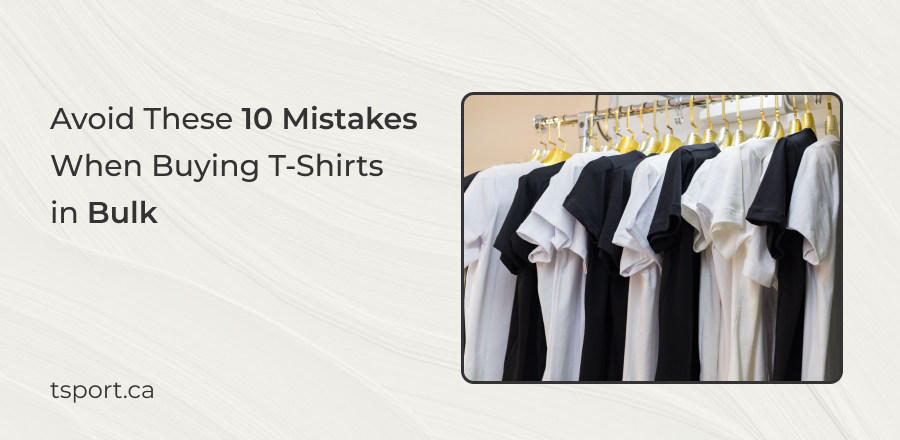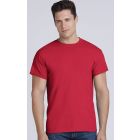
The power of a simple t-shirt should never be underestimated. Whether it's for promoting a business, fostering team unity, or commemorating an event, t-shirts hold the unique ability to convey messages and bring people together. When it comes to acquiring t-shirts in large quantities, buying in bulk becomes an enticing option.
However, this seemingly straightforward process comes with its own set of challenges and potential pitfalls. To navigate this terrain successfully, it's crucial to steer clear of common errors that many buyers make.
In this guide, we'll delve into the critical topic of bulk t-shirt purchasing and explore the top mistakes that you should avoid. By being armed with this knowledge, you can ensure that your bulk t-shirt buying experience is seamless, cost-effective, and ultimately, satisfying.
1. Neglecting Quality for Cost
One of the most prevalent errors when purchasing t-shirts in bulk is prioritizing cost over quality. While it's understandable that budget considerations play a significant role, compromising on quality can lead to dissatisfaction among wearers. Thin, uncomfortable fabric and subpar printing can reflect poorly on your brand or event. Instead of solely focusing on the lowest price, strike a balance between affordability and quality. Look for reputable suppliers who offer competitive pricing for durable, comfortable t-shirts.
2. Skipping Sample Orders
Skipping the sample order stage is a risky move when buying t-shirts in bulk. Ordering samples allows you to assess the actual product quality, fabric, sizing accuracy, and print or embroidery work before committing to a large order. Even if you've worked with a supplier before, variations can occur between different batches or styles. By testing a sample, you can catch any discrepancies early on and make necessary adjustments.
3. Disregarding Fabric Choice
T-shirt fabrics come in a wide array of options, including cotton, polyester, blends, and specialty fabrics. Each fabric type has its own characteristics, such as breathability, durability, and comfort. Failing to consider the intended use of the t-shirts can result in uncomfortable garments that don't meet the wearers' expectations. For instance, if you're ordering t-shirts for sports teams, moisture-wicking fabrics might be preferable. Always choose a fabric that aligns with the purpose and preferences of the wearers.
4. Ignoring Sizing Variations
Sizing is a critical aspect that can't be overlooked when ordering t-shirts in bulk. Standard sizing isn't always consistent across different brands or styles, and it's crucial to recognize that individuals have diverse body shapes and sizes. To avoid ending up with a pile of ill-fitting t-shirts, provide your supplier with accurate sizing information. Consider ordering a range of sizes based on the demographic of the wearers to ensure a comfortable fit for everyone.
5. Rushing the Design Process
The design of the t-shirts plays a pivotal role in their overall appeal. Rushing through the design process without careful consideration can lead to a lackluster result. Take the time to create a design that resonates with your brand or event and communicates your message effectively. Collaborate with designers or design teams to ensure that your vision is translated accurately onto the t-shirts. Remember that a well-thought-out design can significantly enhance the perceived value of the t-shirts.
6. Overlooking Printing Techniques
Selecting the appropriate printing technique is another factor that can make or break your bulk t-shirt purchase. Different printing methods, such as screen printing, heat transfer, and direct-to-garment (DTG) printing, offer varying levels of detail, durability, and cost. Consider the intricacy of your design, the type of fabric, and your budget when choosing a printing method. Discuss the options with your supplier to make an informed decision that aligns with your goals.
7. Not Clarifying Terms and Policies
Communication with your supplier is paramount when buying t-shirts in bulk. Failing to clarify terms and policies can lead to misunderstandings and potential conflicts down the line. Ensure you have a clear understanding of pricing, minimum order quantities, turnaround times, shipping costs, and return policies. A reputable supplier will be transparent about these aspects, and having everything in writing can provide a reference point if any issues arise.
8. Forgetting About Packaging and Delivery
The process doesn't end after you've ordered the t-shirts. Packaging and delivery are crucial elements that need careful consideration. Discuss packaging options with your supplier to ensure that the t-shirts arrive in excellent condition. Additionally, factor in delivery times, especially if you have a specific event or launch date in mind. Planning ahead can prevent last-minute stress and disappointment.
9. Not Ordering Extra
While it's essential to order the exact quantity of t-shirts you need, it's also wise to order a few extras. These additional shirts can come in handy for various reasons, such as unexpected attendees, future promotional opportunities, or replacements for damaged items. Ordering a few extras as a buffer can save you from potential headaches in the long run.
10. Overlooking Sustainability Considerations
In today's environmentally conscious world, overlooking sustainability considerations can be a significant oversight. As consumers become more eco-aware, choosing sustainable t-shirt options can enhance your brand's image. Investigate whether your supplier offers eco-friendly fabrics, inks, and production methods. By aligning your bulk t-shirt purchase with sustainable practices, you not only contribute to the planet but also attract environmentally conscious consumers.
Conclusion:
In conclusion, buying t-shirts in bulk can be a strategic move, but it requires careful planning and attention to detail. By avoiding these common errors, you can ensure a successful purchase that meets your goals, delights wearers, and reflects positively on your brand or event. Remember to prioritize quality, invest time in design and communication, and consider the long-term impact of your purchase on both your brand and the environment.





